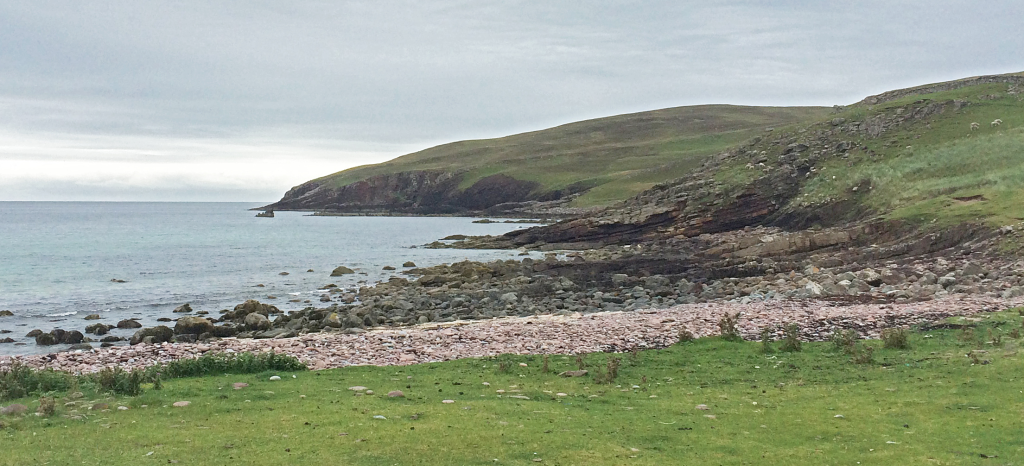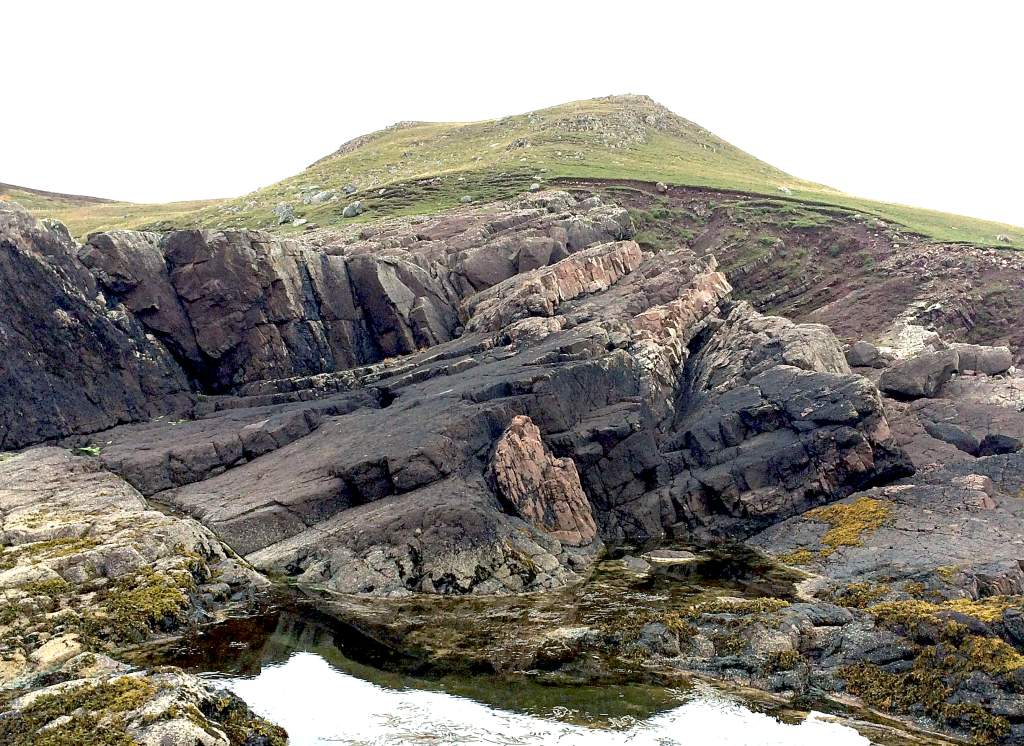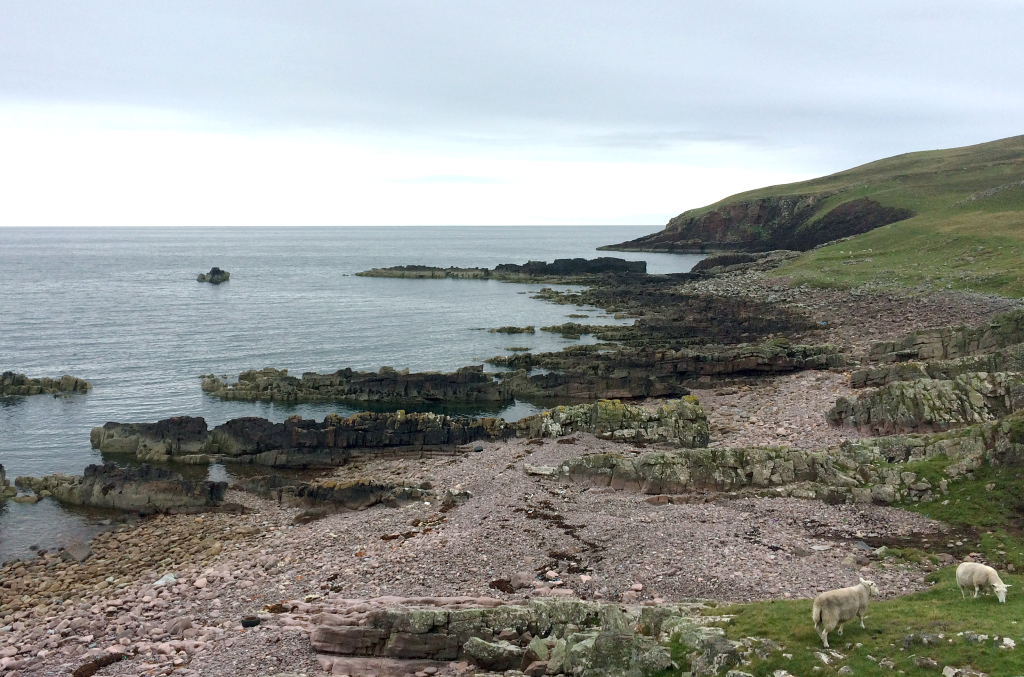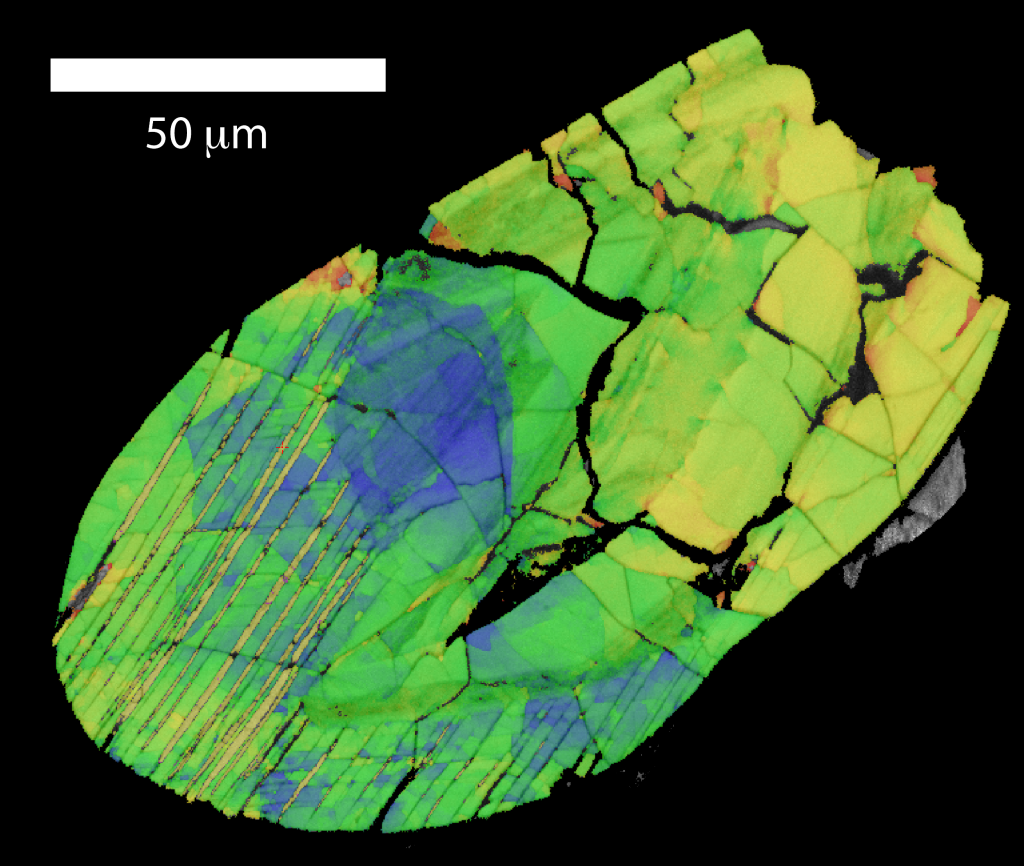Tim Johnson is a metamorphic petrologist and Lecturer at Curtin University, Western Australia. He is currently working on rocks from a range of places, including northwest and northeast Scotland, Norway, southern and eastern India, southwestern Australia and outer space. He is particularly interested in early Earth geodynamics and in the metamorphism of stony meteorites.
You might have noticed, maybe on the BBC website, some work published recently by Steve Reddy and colleagues on the discovery of reidite within grains of shocked zircon from the Stac Fada deposit, part of the thick sequence of Torridonian sandstones that crop out extensively in northwest Scotland (Geology 49, 899–902).
Reidite is an extremely rare mineral, a polymorph (same composition but different structure) of zircon that only forms at incredibly high pressure (> 30 GPa), equivalent to those experienced by rocks almost 1000 km below the surface. Such pressures on Earth’s crust are only achieved as the result of large bolide impacts, and the discovery of reidite is unequivocal evidence that the Stac Fada layer is an impactite, as suggested previously by workers at the University of Oxford (Amor et al., 2008).
The original samples used in our study were collected by Batzi Fischer, a PhD student at the University of St Andrews. I was lucky enough to return to Scotland at the end of August, and revisited the site.

Fig. 1 – The start of the walk from near the graveyard south of Stoer. The Stac Fada Member forms the promontory of rock that extends to the sea stack just visible centre left.
The Stac Fada deposit is most easily accessed on the north side of the Bay of Stoer where it crops out less than 1 km west of the village of the same name. Parking the car opposite the graveyard between Stoer and Loch an Aigeil, it is a pleasant and undemanding walk along low cliffs tops, along layers of Torridonian sandstone, siltstone that dip at moderate angels towards the west (Figs 1 & 2).
Fig. 2 – Typical coastal exposures of Torridonian sandstone that dip at moderate angles towards the west. The promontory of rock and sea stack formed by the Stac Fada Member is clearly visible. Sheep for scale.
Descending onto a promontory that extends seaward toward a small sea stack, the Stac Fada deposit forms a massive purplish brown layer several metres in thickness (Fig. 3). A number of features suggest that the rock was deposited as a fast-moving debris flow (technically known as a suevite) that, in the opinion of Simms (in press), surged from east to west (right to left on Fig. 3), disrupting and folding layers of pre-exisiting rock (siltstone and sandstone) onto and into which it was emplaced. Simms (in press) proposes that a large circular gravity anomaly near the village of Lairg, some 50 km to the west, represents the site of impact, which is now buried beneath younger rocks.

Fig. 3 – The Stac Fada Member fills most of this photo, including the ~5 metre tall subvertical faces to the left. The paler brown rocks are layers of pre-existing sandstone that were disrupted and folded by the fast-moving ejecta blanket. The nose of one of these folds is clearly visible in the centre of the photograph.
Up close, the rock comprises a poorly-sorted purplish matrix containing subrounded clasts of mudstone, siltstone, sandstone and Lewisian gneiss up to 0.5 m in diameter (Fig. 4). More angular pale green fragments resemble a fine-grained volcanic rock. The deposit contains abundant fragments of devitrified glass, whole and broken accretionary lapilli and subvertical vesicular pipes attributed to degassing of the hot sediment. These pipes contain authigenic K-feldspar that has been dated by 40Ar/39Ar at 1177 ± 5 Ma (Parnell et al., 2011), the best estimate for the age of the Stac Fada Member. Quartz and biotite contain planar deformation features consistent with high-pressure shock metamorphism, in accord with Cr isotopic values and elevated abundances of platinum group and other siderophile metals that indicate the addition of meteoritic material (Amor et al., 2008).
![Fig. 4 – Close-up of a typical fresh exposure of the Stac Fada deposit. The angular pale green fragments resembles a glassy volcanic rock enclosed in poorly-sorted muddy sandstone. Fragments of red-brown siltstone that were ripped up from the bed rocks are also visible. The hammerhead is about 15 cm across. Source: [http://www.earth.ox.ac.uk/~oesis/nws/nws-a98-st1.html].](http://www.travelinggeologist.com/wp-content/uploads/2015/10/field_photo_7oxford.jpg)
Fig. 4 – Close-up of a typical fresh exposure of the Stac Fada deposit. The angular pale green fragments resembles a glassy volcanic rock enclosed in poorly-sorted muddy sandstone. Fragments of red-brown siltstone that were ripped up from the bed rocks are also visible. The hammerhead is about 15 cm across. Source.
Using a scanning electron microscope (SEM) and electron backscatter diffraction (EBSD), two zircon grains were found to contain reidite. Reidite occurs as thin lamellae within zircon that are only 2μm wide, about 1/40th the thickness of the average human hair (Fig. 5).
So, why should we care? Well, prior to 2015, only three natural occurrences of reidite were known, all associated with impacts less than 35 million years ago – i.e. geologically young. It seemed tempting to conclude that ancient reidite reverted back to zircon over time. However, in 2015 reidite was discovered in sedimentary rocks dated to around 450 million years ago (Cavosie et al., 2015), a significant increase, but still in the Phanerozoic. The new discovery in Scotland pushes the known existence of reidite back into the Precambrian, to around 1.2 billion years.
Not only is it nice (at least for me as a ‘Caledoniphile’) that the oldest known reidite is from Scotland, but these collective discoveries open up the potential of using reidite to unambiguously identify more ancient impact events. It probably resides within shocked zircon grains in the detritus of even older sedimentary rocks, which may have been deposited long after the time of impact. We just need to keep looking.
Workers at Curtin University (and probably elsewhere) are currently doing this work, looking for evidence of older reidite. If found, the data may yield important information that will allow us to test competing models of the early Earth’s impact record and perhaps say something useful about the early evolution of the solar system.

Fig. 6 – The author (right) and eldest daughter (central) and Stoer lighthouse (back left). The Stac Fada deposit is some 5 km behind the lighthouse and to the left (southeast).
You can read more about Stac Fada in the publications below:
Amor, et al., 2008. A Precambrian proximal ejecta blanket from Scotland. Geology, 36, 4, 303-306.
![]() This work is licensed under a Creative Commons Attribution-NonCommercial-ShareAlike 4.0 International License.
This work is licensed under a Creative Commons Attribution-NonCommercial-ShareAlike 4.0 International License.


